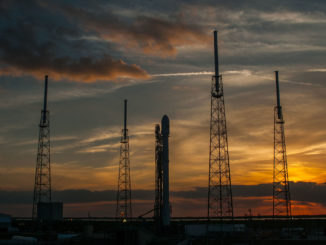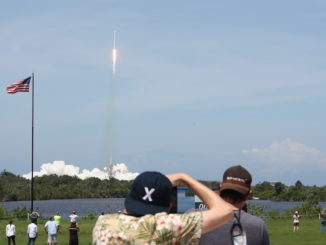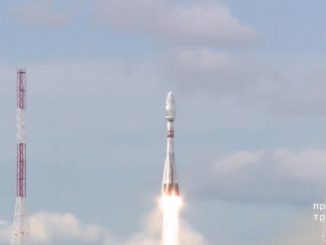A United Launch Alliance Atlas 5 rocket emerged from its vertical hangar Tuesday for the 1,800-foot journey to pad 41 at Cape Canaveral Air Force Station, moving into position for liftoff Thursday with NASA’s Mars 2020 Perseverance rover.
Riding a mobile launch platform, the 197-foot-tall (60-meter) Atlas 5 rocket — tail number AV-088 — emerged from ULA’s Vertical Integration Facility soon after 10 a.m. EDT (1400 GMT) Tuesday. Less than an hour later, the rocket was on pad 41, and teams began the process of connecting the launcher to ground supplies of power, propellant and other fluids.
The Atlas 5 is scheduled for launch Thursday during a two-hour window opening at 7:50 a.m. EDT (1150 GMT). It will be the fourth Atlas 5 launch of 2020, and the 85th flight of an Atlas 5 rocket since it debuted in August 2002.
The rocket procured by NASA for the launch of the Mars 2020 mission will fly in the “541” configuration, with a 5.4-meter (17.7-foot) diameter payload fairing, four strap-on solid rocket boosters provided by Aerojet Rocketdyne, and a Centaur upper stage powered by a hydrogen-fueled Aerojet Rocketdyne RL10 engine.
The first stage main engine is a Russian-made RD-180 powerplant that will consume kerosene and liquid oxygen during the first four-and-a-half minutes of flight.
The Atlas 5 will fire the roughly 9,000-pound (4.1-metric ton) spacecraft away from Earth with a relative velocity of 24,785 mph, or about 11 kilometers per second, according to ULA. Separation of the Mars 2020 spacecraft is expected 57 minutes after liftoff.
Photos of the Atlas 5 rocket’s rollout to pad 41 are posted below.
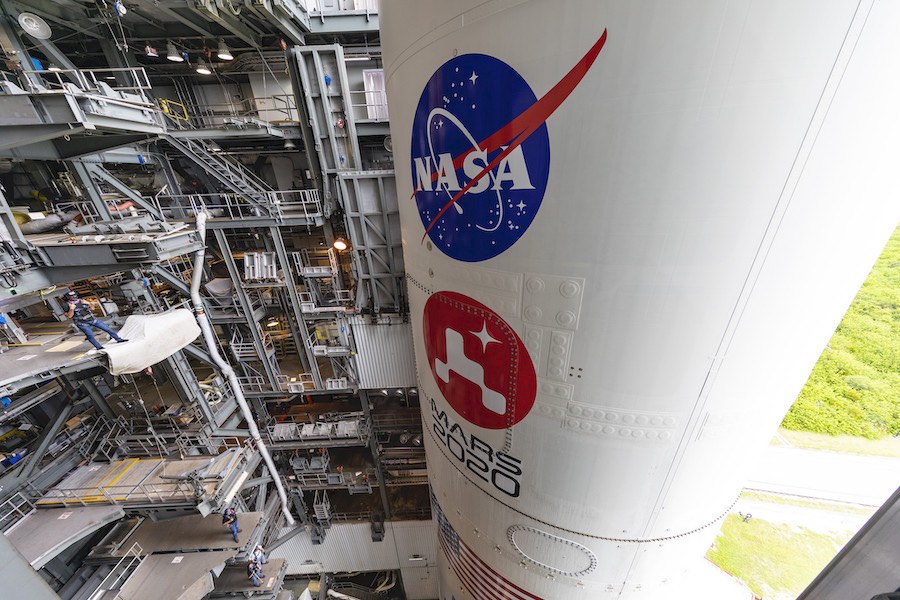
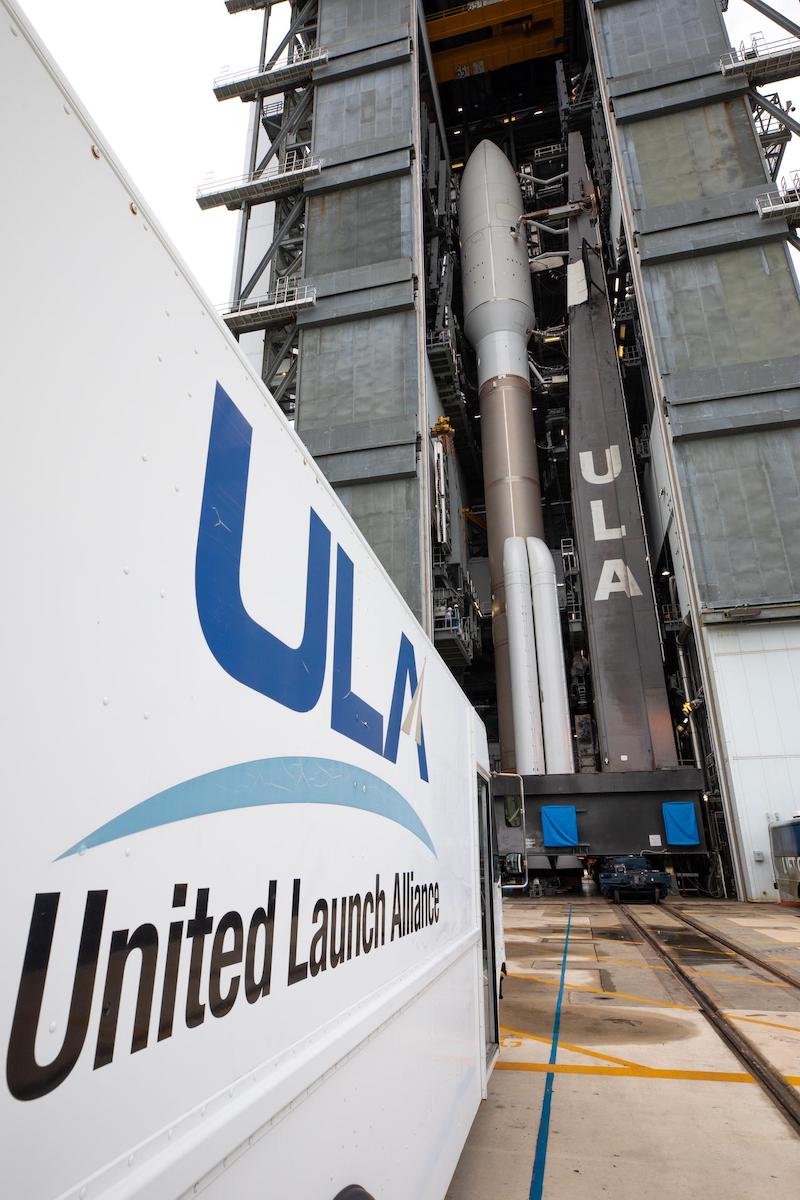
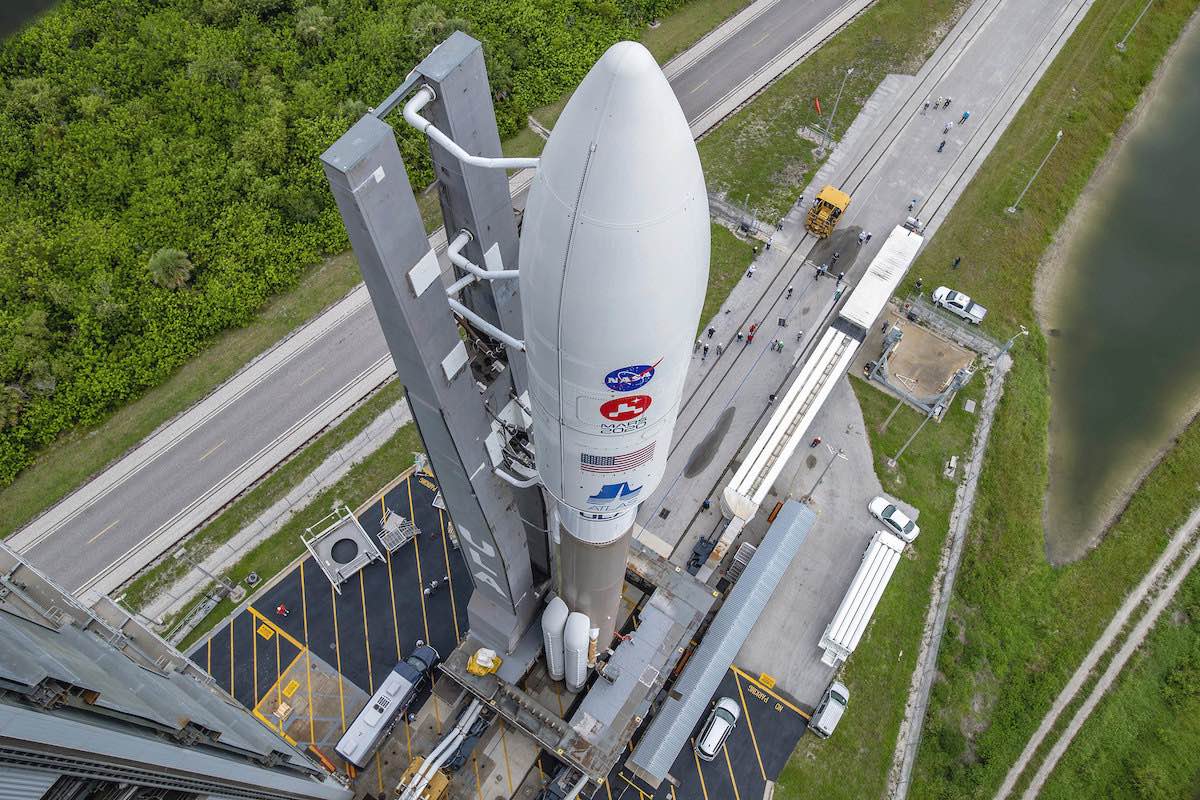
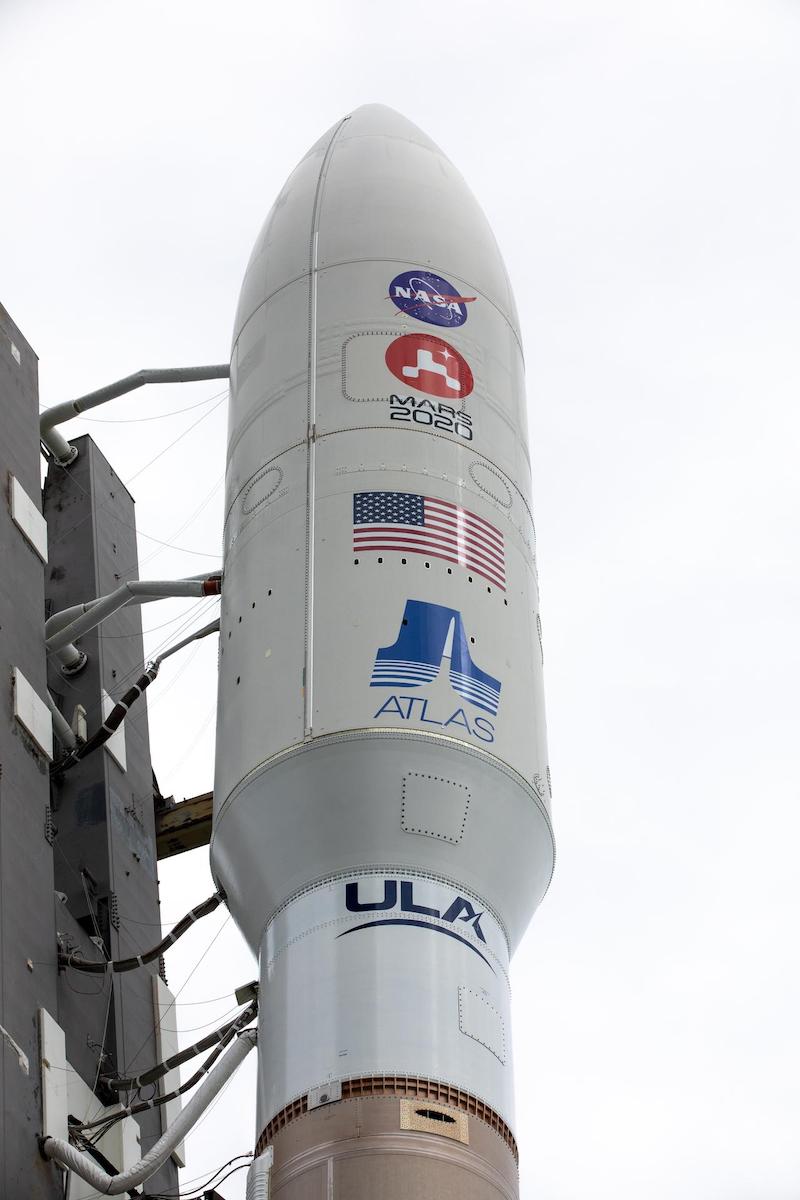
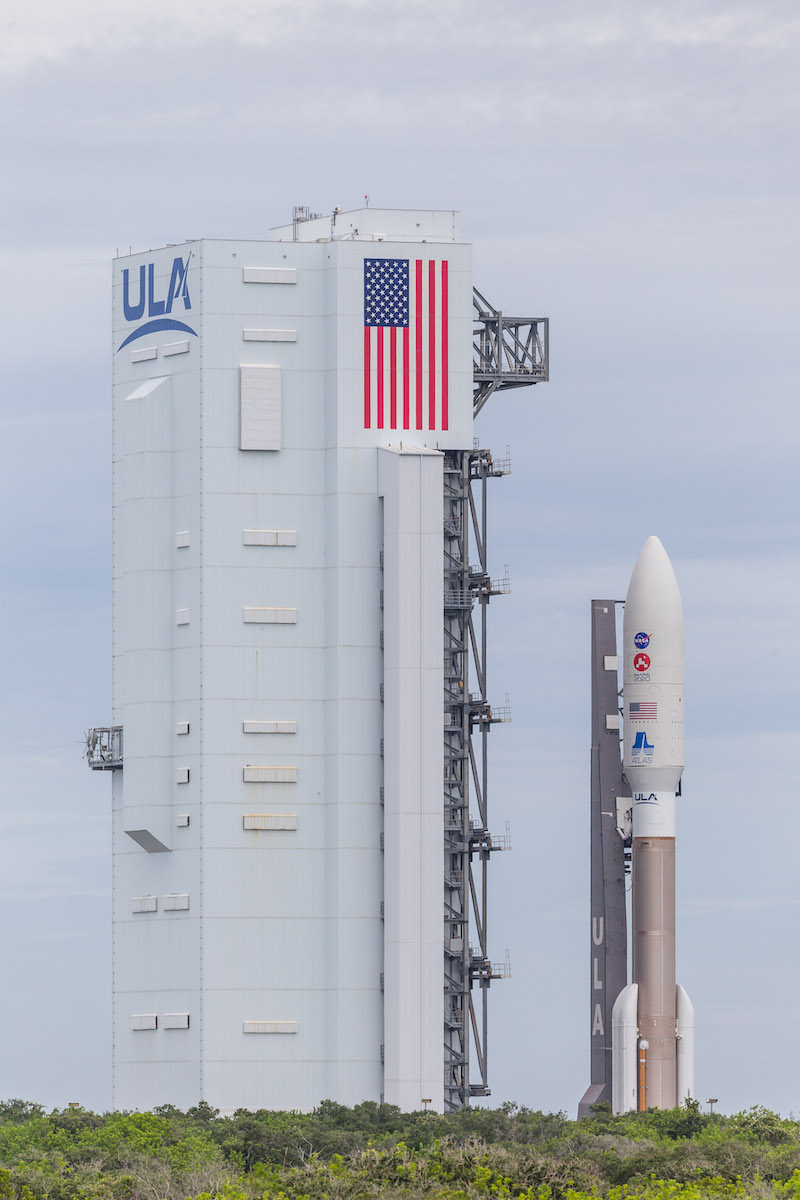
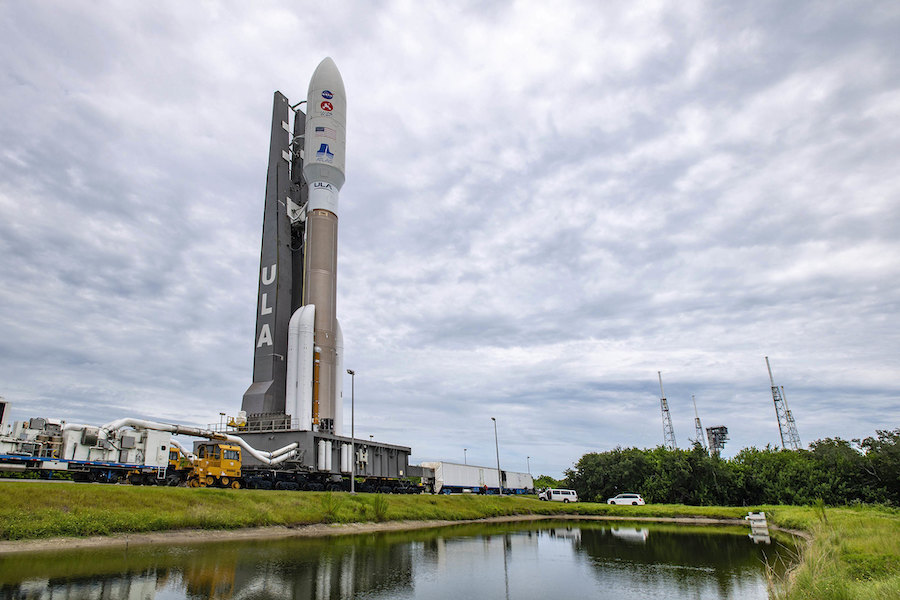
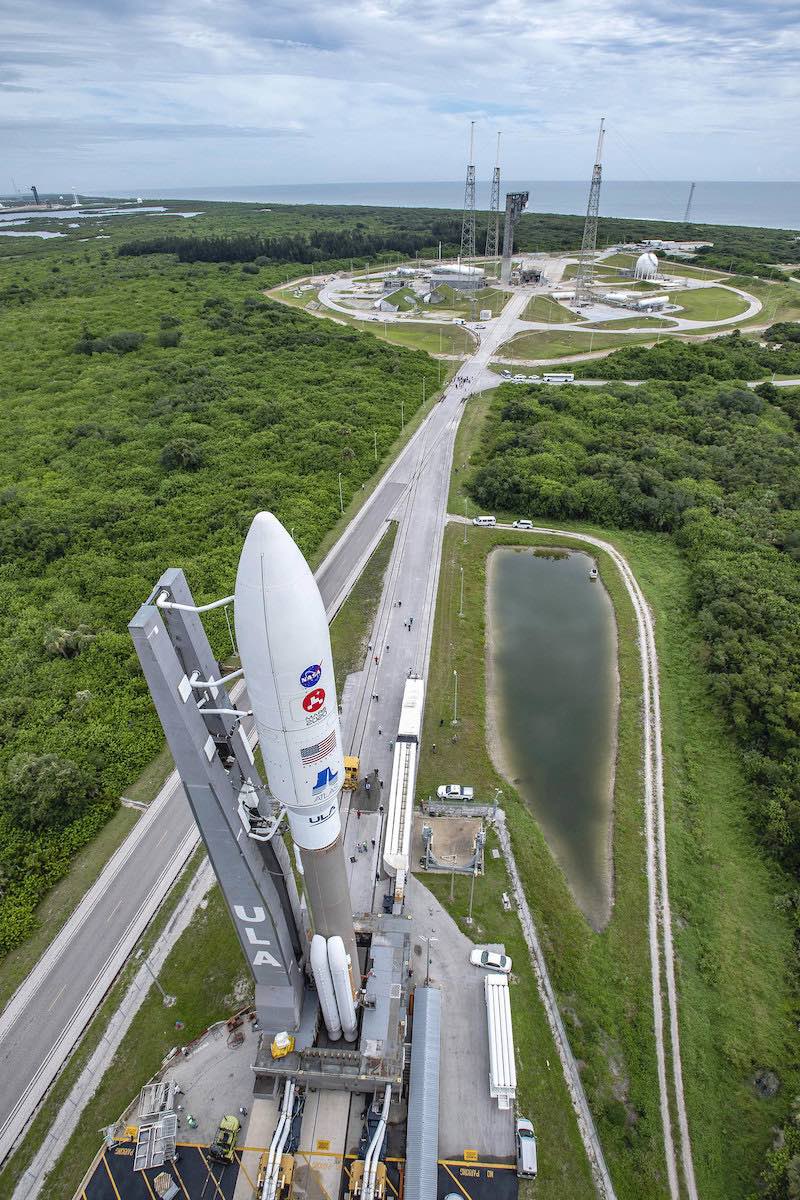
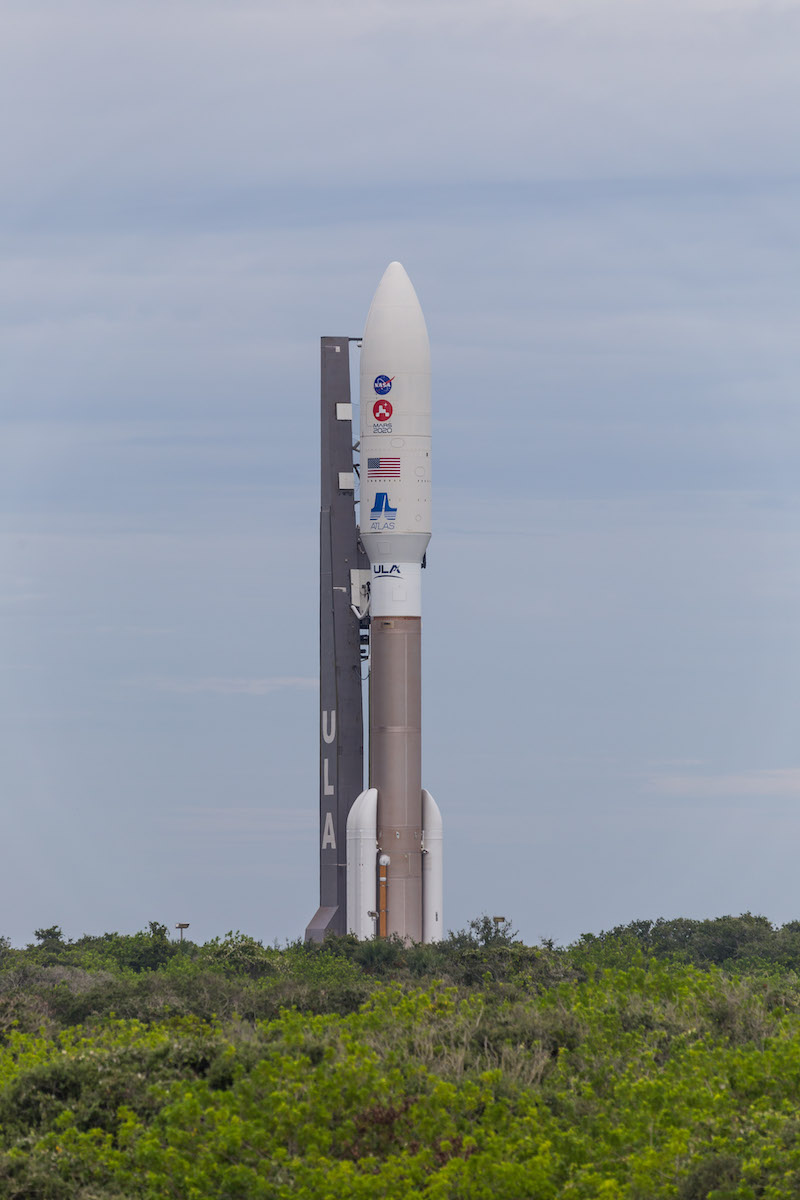
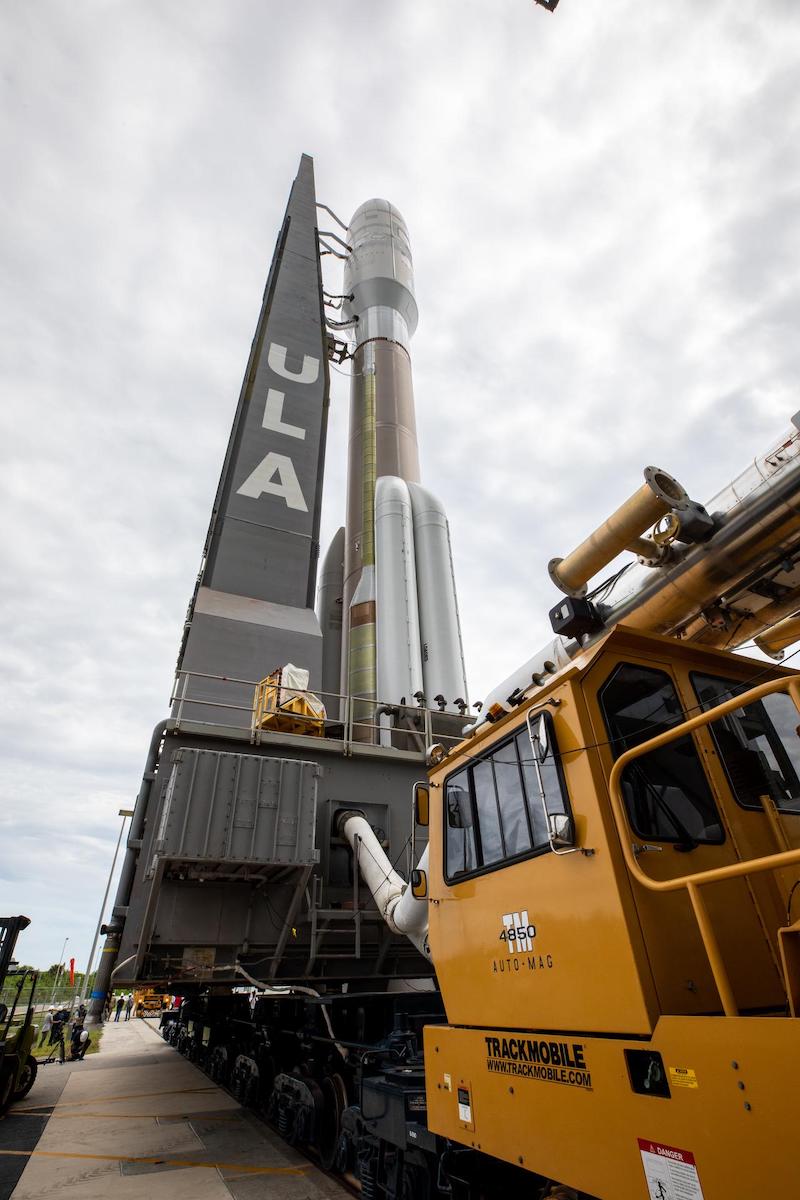
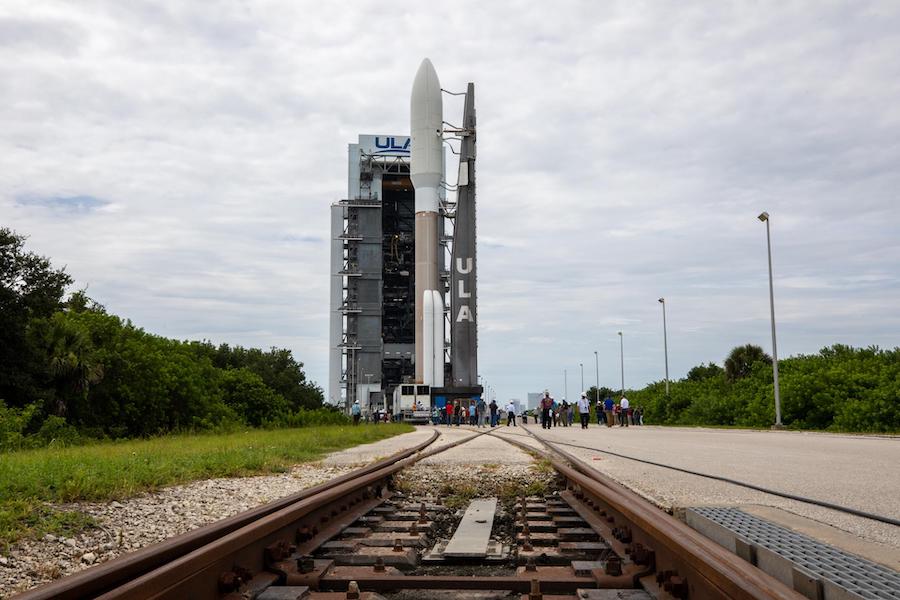
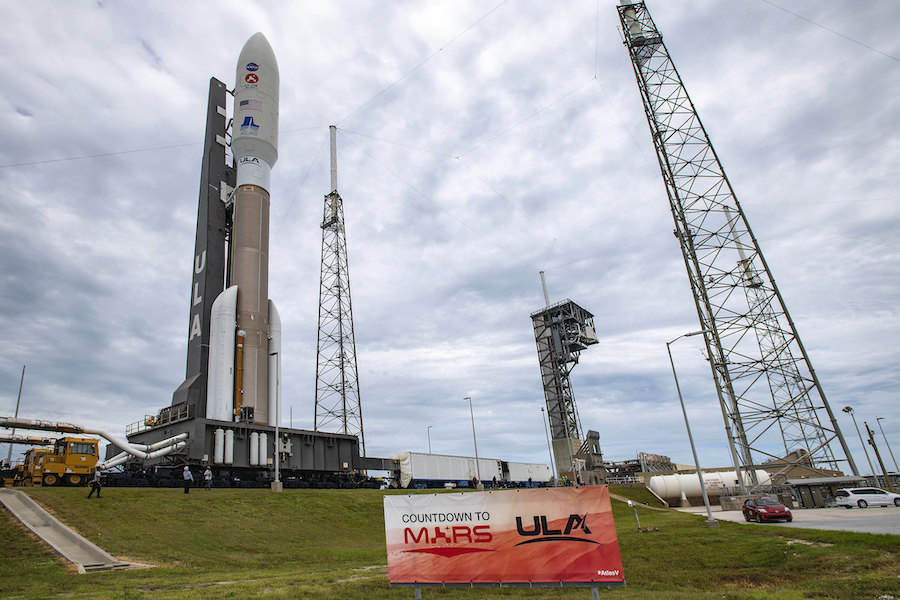
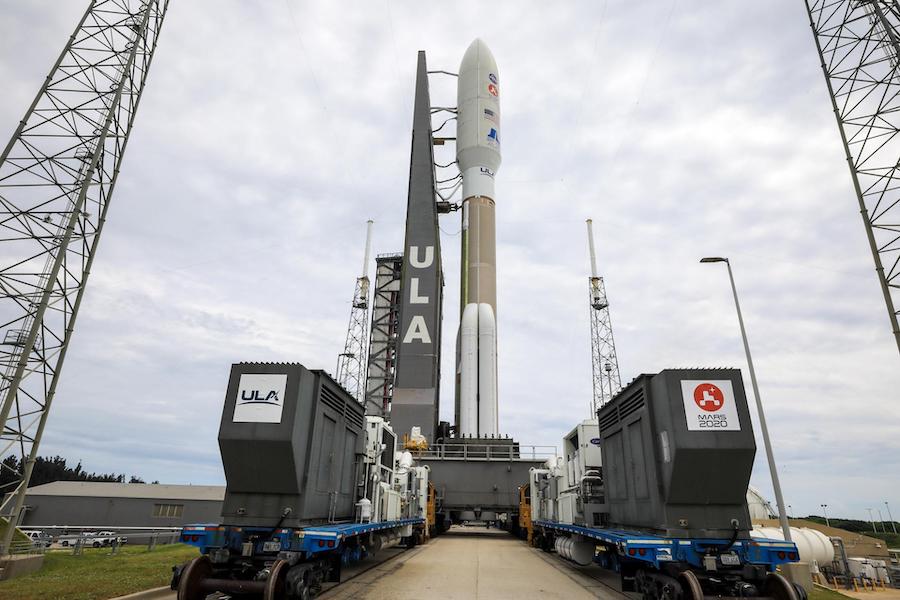
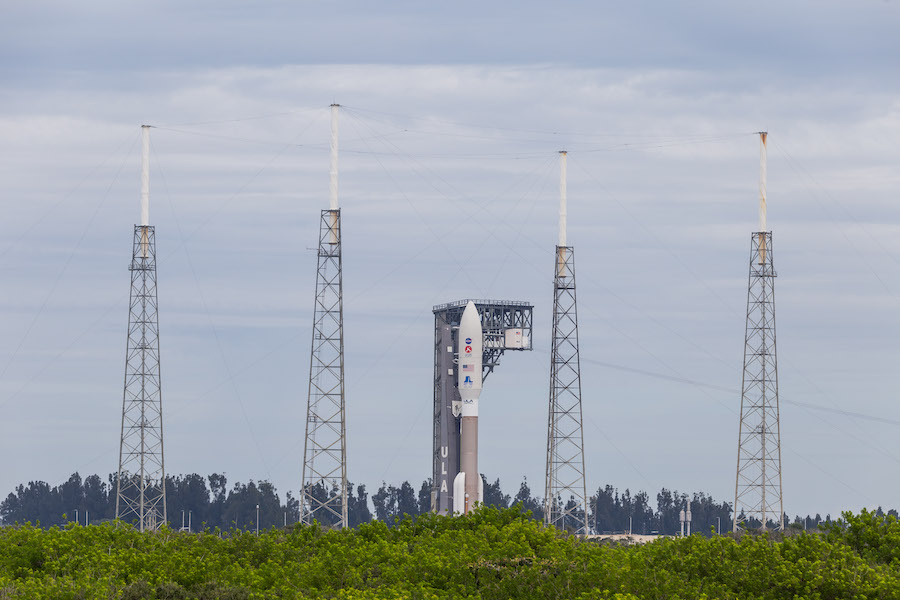
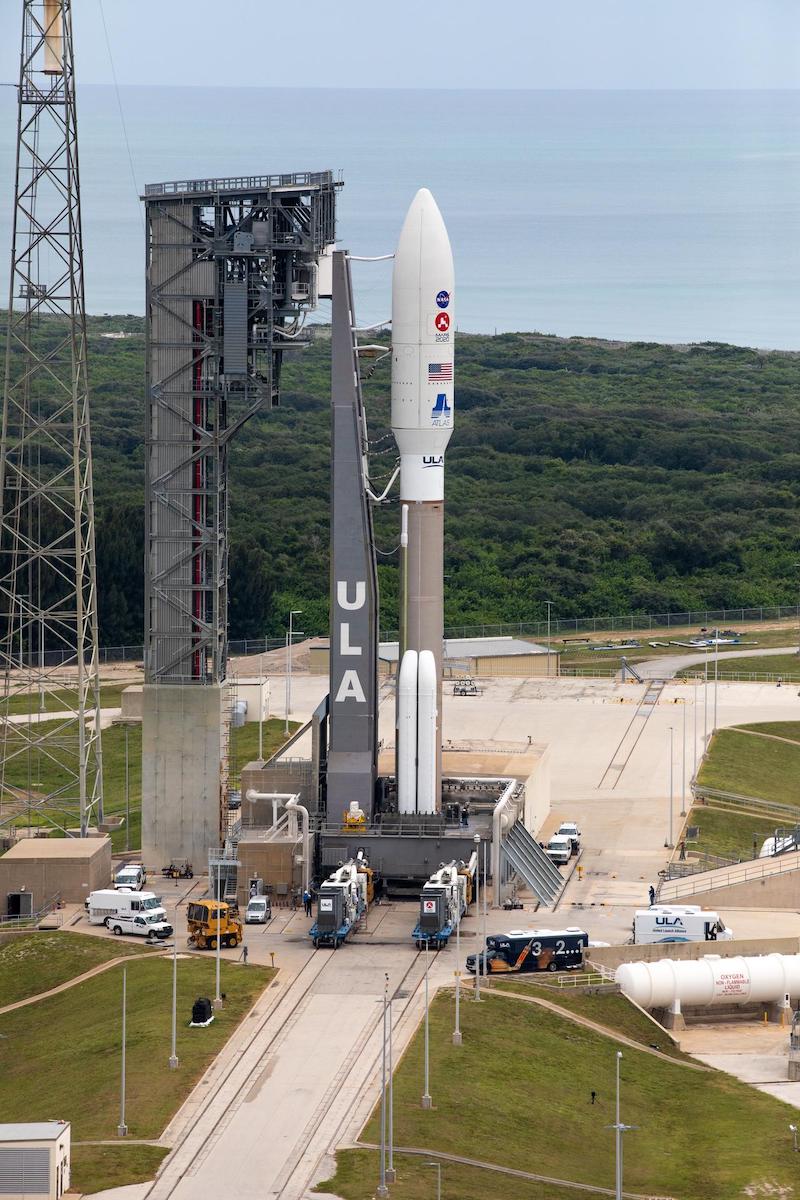
Email the author.
Follow Stephen Clark on Twitter: @StephenClark1.

